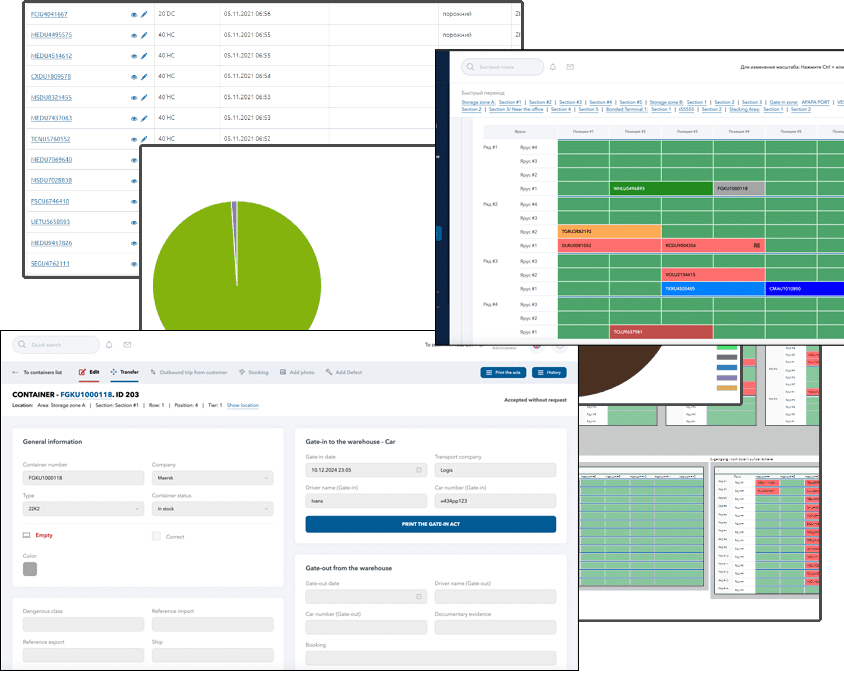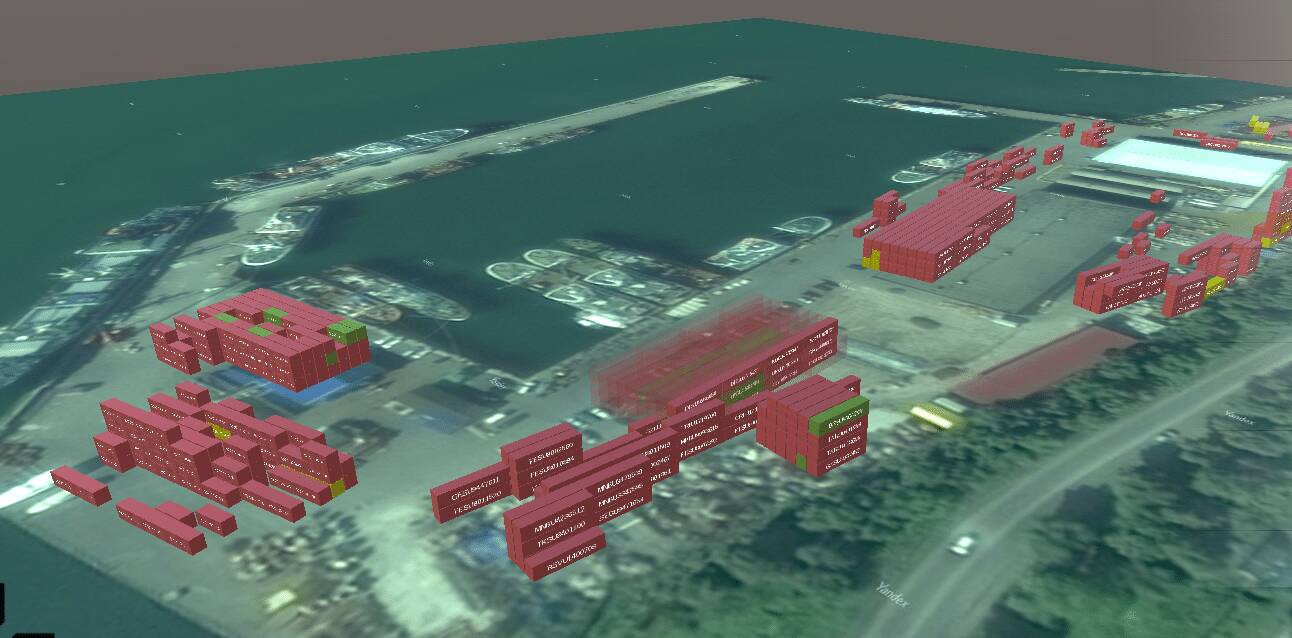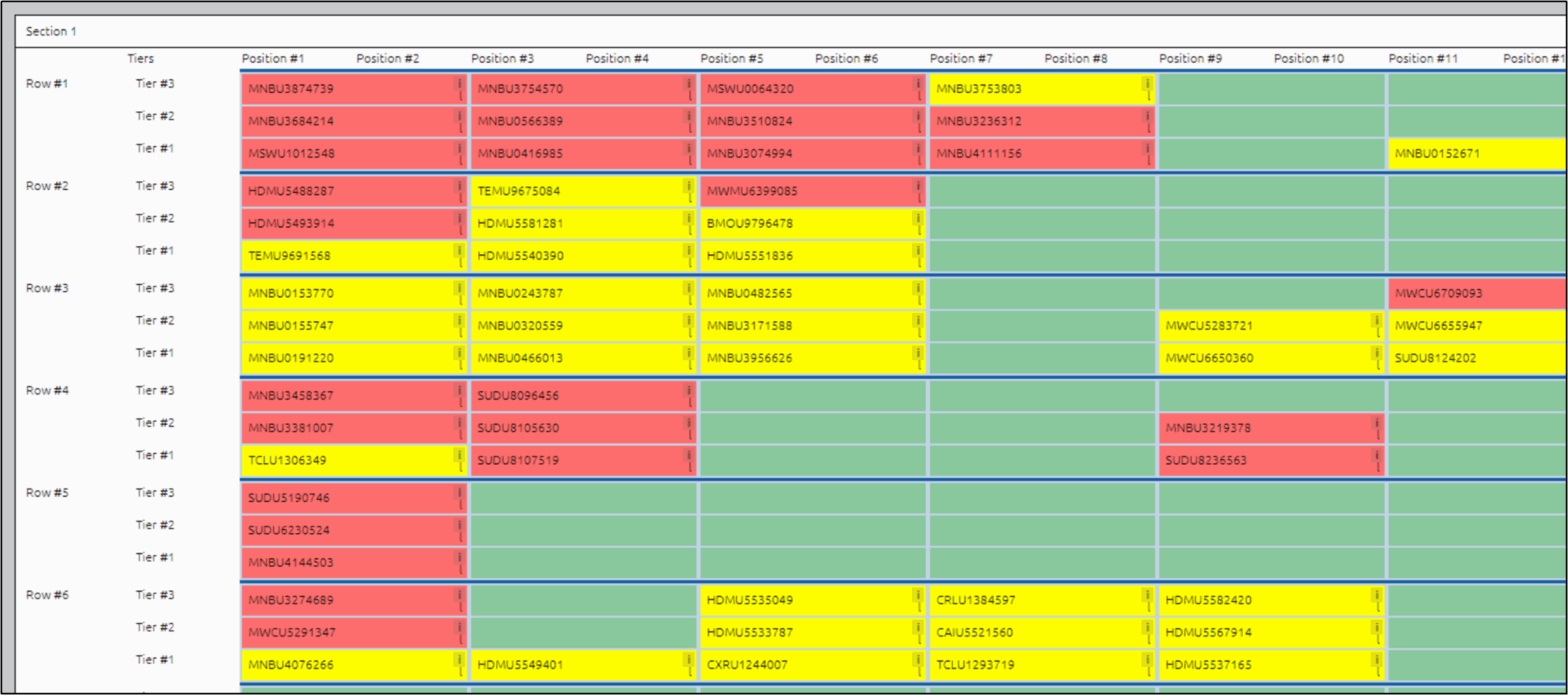A Container Terminal Management System (CTMS) is a digital platform that automates and streamlines operations across seaports, Inland Container Depots (ICDs), and Container Freight Stations (CFSs). It enhances real-time control over container flows, yard activities, gate movements, and billing.
Facility Types Using CTMS
| Facility Type | Key Focus | CTMS Role |
|---|---|---|
| Seaport Terminal | Vessel operations, quay planning | EDI, gate automation, stacking, dispatch |
| ICD (Dry Port) | Rail logistics, customs clearance | Bonded storage, rail slot planning, compliance |
| CFS | LCL cargo, consolidation | Package tracking, bonded warehouse control |
Core CTMS Modules
| Module | Description |
|---|---|
| Gate-In / Gate-Out | Automates container entry and exit with EDI (CODECO), photo capture, and OCR |
| Yard Planning | Visual stacking logic, slot allocation, occupancy tracking |
| Equipment Dispatch | Assigns tasks to reach stackers and terminal tractors based on priorities |
| Repair Module | Logs damages, generates work orders, and manages repair workflow |
| Billing & Tariffs | Calculates charges based on services, time-in-yard, and client contracts |
Benefits of Implementation
- Reduced container dwell time
- Full visibility across operations
- Elimination of manual paperwork
- Real-time synchronization with ERP and customs
- Enhanced client service and cost transparency
EDI and API Integration Capabilities
CTMS platforms are designed to interact with external systems such as customs, ERP, TOS, and shipping lines via EDI (Electronic Data Interchange) and RESTful APIs. This ensures that all stakeholders have access to synchronized, real-time data.
Supported EDI Messages
- CODECO – Container gate-in/gate-out confirmation
- COARRI – Container loading/discharge to/from vessel
- IFTMIN – Booking instructions
- CUSCAR – Customs cargo report
API Access Features
| Function | Use Case |
|---|---|
| Container status sync | ERP or customer portal retrieves live container status |
| Invoice posting | Push invoice data into external accounting systems |
| Customs integration | Send movement reports to customs EDI gateways |
| Event notifications | Trigger alerts on container entry, release, or delays |
Benefits of Implementing CTMS
- Faster container turnaround — reduced idle time through automation
- Centralized visibility — real-time tracking across yard, gate, and warehouse
- EDI compliance — reduced paperwork, full traceability
- Cost control — accurate billing, reduced human errors
- Better decision making — analytics dashboards and live KPIs
Use Cases: Real-World Application of CTMS
Mid-size Seaport (4000 TEU capacity)
- Integrated with 2 shipping lines (via CODECO, COARRI)
- Gate automation reduced processing time by 40%
- Billing accuracy increased due to automatic charge calculation
Inland Container Depot (ICD) with Rail Link
- Rail schedule module synced with national train system
- EDI integration with customs reduced clearance delays
- Staff training completed in less than 1 week
Implementation Process
- Discovery – process analysis and requirement gathering
- Configuration – customizing modules to terminal type
- Data Migration – importing container, client, and tariff data
- Training – hands-on instruction for users and operators
- Go-Live – gradual or full system switch with vendor support
Get Started with CTMS Today
If your terminal, depot, or logistics hub is ready to move beyond spreadsheets and siloed operations, CTMS provides a proven path forward. Gain visibility, automate core functions, and connect with partners across the supply chain.
Contact our team to request a demo or start a pilot implementation.








